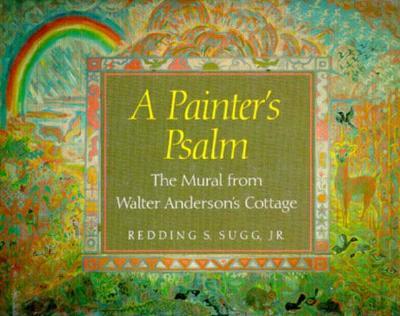When he was alive, Mississippi painter Walter Anderson lived as a recluse in his Ocean Springs home. Nature served as the fulcrum of every Anderson painting. Redding S. Sugg, Jr., edited The Horn Island Logs of Walter Inglis Anderson and Walter Anderson’s Illustrations of Epic and Voyage. Published in 1992, A Painter’s Psalm: The Mural from Walter Anderson’s Cottage revolves around Anderson’s crowning work that remained unknown until his death.
For those not familiar with the work of Walter Anderson, Sugg’s book is a nice place to start. Born in New Orleans during 1901, Anderson purchased property in Ocean Springs, Mississippi, in 1918. Anderson spent time working and studying in New York City, Paris, France and The Pennsylvania Academy of the Fine Arts.

Anderson’s brother started an Ocean Springs pottery business in the late 1920s that is still in existence today. In fact, some of Anderson’s work, the family pottery business and his home were destroyed in Hurricane Katrina. Anderson died in 1965. He suffered from depression, and of course sometimes an artist’s personal life overshadows his work. Anderson experienced difficulty in balancing his work with his family life…like many artists. However, this book provides a compelling perspective of why Walter Anderson was a Holy Man of the highest order. Anderson once said:
“Bad things do happen; how I respond to them defines my character and the quality of my life. I can choose to sit in perpetual sadness, immobilized by the gravity of my loss, or I can choose to rise from the pain and treasure the most precious gift I have – life itself.”
A Painter’s Psalm revolves around Anderson’s most famous work–a series of murals at his Ocean Springs cottage. The walls of this inimitable cottage are indeed a sight to behold. Anderson devoted his life to the austere beauty of the Mississippi Gulf Coast. His work–for this writer–resembles that of William Blake. A padlocked room in his cottage was dedicated to the Bible’s Psalm 104.

This book contains photographs of each mural in the house, which were broken down into chapters such as “The Mural”, “East Wall: Sunrise”, “South Wall: Noon”, “West Wall: Sunset”, “North Wall: Night” and “Ceiling: Zinnia”. In Anderson’s words, the Zinnia represented “the most explosive and illuminating of flowers.”
The Walter Anderson Museum of Art operates in Ocean Springs, Mississippi. A Painter’s Psalm provides clues on a map leading to one of the South’s most talented and obscure artist’s doorstep.

